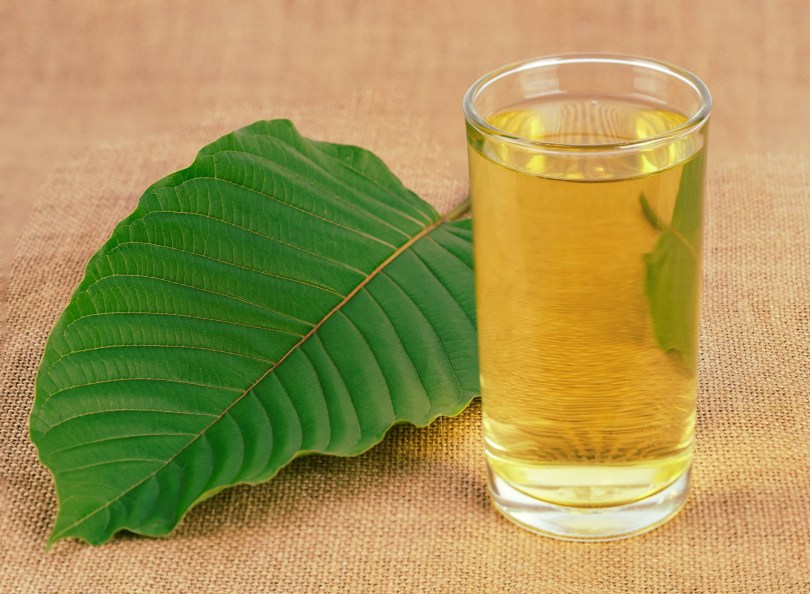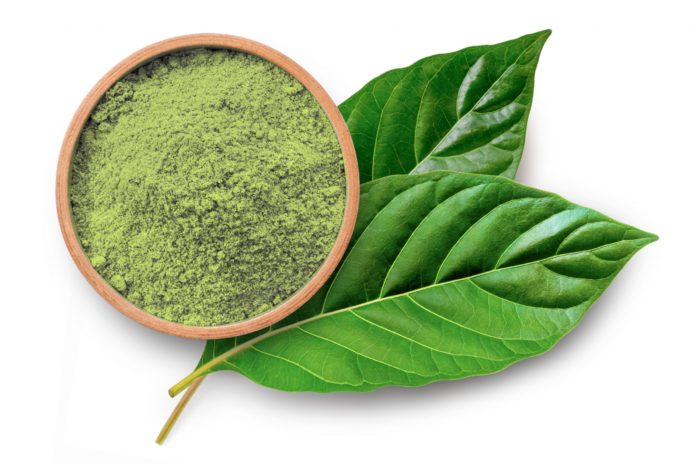As cannabis and medical psychedelics worm their way to legality, other plants are also being eyed for their medicinal benefits. Take kratom, for example, a small evergreen shrub which has garnered its own publicity as of late. So, what’s the deal with kratom, is it legal? And how can it be used?
Kratom is yet another plant that offers great medicinal and recreational benefits, and its legal! Just like with cannabis, it can be used as a full plant, or bought as a mitragynine concentrate. Cannabis has many compounds that can be extracted like delta-8 THC, THCV, and THCA to name a few. Plants are the ultimate source of everything, so check out our deals for all kinds of natural compounds, and we’ll get you your products ASAP. Save big on Delta 8, Delta 9 THC, Delta-10 THC, THCO, THCV, THCP & HHC products by checking out our “Best-of” lists!
What is kratom?
Native to Southeast Asia, kratom – Mitragyna speciosa, is a tropical evergreen tree in the coffee family. Kratom is native to Thailand, Papua New Guinea, Malaysia, Myanmar, and Indonesia, and has been a part of natural medicine traditions for hundreds, or even thousands of years, though it only entered into Western medicine in the 1800’s when Dutch botanist Pieter Willem Korthals originally classified it as Stephegyne speciosa. This was updated to its current classification in 1859 by George Darby Haviland.
Similar to the coca plant, kratom can produce a stimulant effect when its leaves are chewed. However, that’s where the similarities end. Kratom is home to a number of alkaloids which cause feelings of euphoria and general alertness in smaller doses, and can have effects more in line with opioids at higher does. Why the plant can have such different effects depending on amount, is not yet known.
Kratom is often considered a psychedelic since its alkaloid structure is similar to drugs like LSD and psilocybin, however, kratom does not induce the same kind of psychedelic effects. 26 different alkaloids have been identified from the kratom plant, including 7-Hydroxymitragynine, Mitragynine, and (-)-Epicatechin. 7-Hydroxymitragynine reacts with opioid receptors, and though potent, only comprises a small amount of the plant. Mitragynine, the compound seen the most in kratom, binds to Delta receptors and act as a stimulant in small doses, and binds to Mu receptors in larger doses, creating a sedative effect.
(-)-Epicatechin is an anti-inflammatory agent which also helps against free radical damage. It’s a flavonoid which can be found in cherries, grapes, tea leaves, cocoa, apples, blackberries, and broad beans.
Though modern government campaigns seem hellbent on advertising some kind of addiction to the plant, studies about it suggest that while the plant can cause a certain level of dependence, this dependence does not lead to ill health, as it tends to with hard drugs like opiates. Those who use kratom remain healthy. A 2014 study from Malaysia showed no impairment of social functioning from the plant, and all talk of addictions seem to come from the West. As of right now, kratom is technically legal in the US.
How is kratom used?
While Western medicine can be slow with the pick-up, only now catching up to where Eastern medicine has been with cannabis and psychedelics for thousands of years, ancient traditions can often be a lot more useful in understanding how a compound can be used, and what should be looked out for. It’s difficult to find direct information about when kratom began factoring into local medicine traditions, with expectations being that it was before recorded history, like with many other plants.
Traditionally, kratom leaves have been made into a tea, chewed on, or sometimes smoked, and the plant continues to be consumed in that way in Southeast Asia. It should be noted that in comparisons of recent literature into kratom, that in Southeast Asia its distributed legally, and the producer is known, whereas in the West it comes from anonymous internet sites, and often in different forms, like pills, capsules, gum, powders, etc.
Now, and in history, it has been used to treat fever, diarrhea, pain, and wounds, to enhance physical endurance and relieve stress for male workers, and in places like Malaysia to reduce illicit substance dependence and ease withdrawal.
In the West, its used a bit differently. It was originally introduced as a way to manage pain, and since then has been used more widely for substance abuse control. It is also sold as a way to get high, with concentrated forms of mitragynine making their way onto the market. This is expressly not how it’s used in Southeast Asia, and not how it was used historically.

Kratom is not associated with a death count in Southeast Asia. At worst, the plant produces the following adverse effects: weight loss, dehydration, constipation, shaking hands, headaches, and hyperpigmentation, as well as lethargy and fatigue. From the West there have been reports of seizures, hypothyroidism, and liver injury, but these reports are inconsistent with standard use out of Southeast Asia. The questions of how and why these discrepancies exist elicit the same response as with cannabis synthetics, and compounds like delta-8 THC. It seems to have more to do with additives, or things besides the actual plant.
Like the story from Sweden involving nine fatalities related to a product called ‘Krypton’ which was a mix of kratom, caffeine, and the synthetic opioid O-desmethyltramadol. The latter was the real culprit in the deaths, but somehow, it became a bad press story about kratom. Reports of toxicity and fatalities seem to be only from the West indicating that perhaps how the plant is being used, and the processing and market issues related, are the actual issue, not the effects of the plant.
In fact, it has been found that many fatalities reported as being associated with kratom, actually involved the use of other drugs. Considering that kratom is used to help ease withdrawal from opiates, this opens the door wide for confusion over kratom’s actual place in the deaths vs the other drugs involved, like opiates. Adulterants and contaminants aside, simply making products out of a concentrated compound from the plant (like mitragynine) could also cause problems. In Southeast Asia the plant is taken as is, without any processing done.
Kratom, is it legal?
As with anything good for you that the government can’t profit from, kratom is the subject of smear campaigns, and government propaganda. The DEA actually attempted to change the status of kratom from legal, to Schedule I of the Controlled Substances list, based on one of its active components, mitragynine, in 2016. Pushback was incredibly severe, with 51 House members, nine Senators, and a petition of 140,000 users which stopped it from happening.
First the DEA only partially stood down, making this insane statement: “We can’t rely upon public opinion and anecdotal evidence. We have to rely upon science”, which works to rule out any and all accumulated information from natural medicine traditions, and from actual users. However, it was also clearly a showing of a losing battle, as the DEA withdrew its intent to schedule the compound in October of that year.
As far as the FDA, the showing hasn’t been any better. First the agency argued for the illegalization of kratom saying “The FDA has done an exhaustive review of adverse event reports, clinical literature and other sources of information related to kratom” in 2016 as a response to criticism about trying to prohibit it. However, this turned into a statement in 2018 about the FDA’s proposal to prohibit kratom being rejected because of “embarrassingly poor evidence [and] data.” It says quite a bit about not being able to let go, that Former commissioner Gottlieb, who made the first statement, is still defending that statement in 2021.

Kratom was never officially illegalized in the US, and still enjoys legal status, though it is a controlled substance in 16 countries. Most of these are not in Southeast Asia from which kratom originates. However, restrictions are creeping into some of those countries too. Malaysia’s ban goes back to the 50’s, but is not followed. Indonesia, on the other hand, only recently began working to institute a ban, which would actually be a hard hit to the US supply. Logically, this is likely the reason for it. Especially considering it wasn’t even thought of until 2019, and the plant has been used there for hundreds, or thousands, of years without incident.
Thailand is going in the opposite direction. First it illegalized the planting of kratom in 1943, and kept it illegal until 2018. That year, the country passed a medical legalization for the plant, followed by a complete legalization in 2021. It should be remembered that Thailand is also the first Asian country to grant a medical legalization for cannabis. It’s good to see this, since it seems highly likely that as a result of the US being unable to change kratom from its legal status, that the government is working on cutting off supply countries, even if it means forcing these countries to institute laws prohibiting the use of the plant in their own country.
Conclusion
Kratom offers a lot of benefits, including one massive one in dealing with opiate addiction. It certainly says something when patients discover something like this on their own, and without doctor intervention, and keep with it. That kratom gets a bad name at all is probably more related to the US government’s inability to earn from it, while also being an aspect of what happens when the West ruins a market by adulterating what was once pure and good, into something dirty, contaminated, and lacking in original qualities.
Hello and welcome! You made it to CBDtesters.co, the best internet location for the most thought-provoking and relevant cannabis and psychedelics-related news from everywhere in the world. Check out the site frequently to stay informed on the ever-changing world of legal drugs and industrial hemp, and remember to sign up for The Delta 8 Weekly Newsletter, so you never miss a single thing.
Disclaimer: Hi, I’m a researcher and writer. I’m not a doctor, lawyer, or businessperson. All information in my articles is sourced and referenced, and all opinions stated are mine. I am not giving anyone advise, and though I am more than happy to discuss topics, should someone have a further question or concern, they should seek guidance from a relevant professional.

